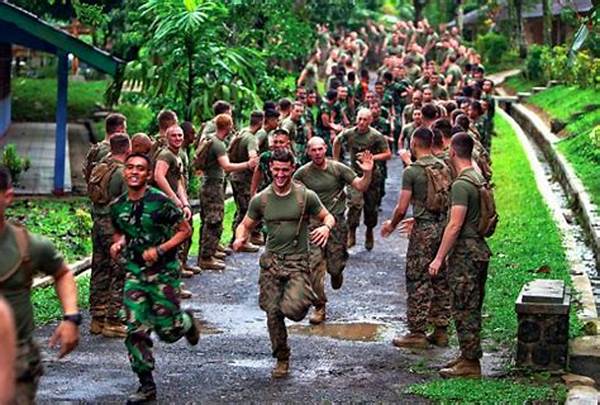In an era characterized by myriad global security challenges, multinational military training programs have emerged as essential mechanisms for bolstering international defense collaboration. As nations converge to build cohesive security strategies, these training initiatives serve as pivotal platforms for enhancing interoperability among diverse military forces. Moreover, they contribute significantly to forging alliances, enhancing operational readiness, and reinforcing peacekeeping efforts globally. This discourse delves into the multifaceted aspects and imperatives of such programs, underscoring the integral role they play in maintaining global security equilibrium.
The Strategic Importance of Multinational Military Training Programs
Multinational military training programs ensure that allied forces can operate seamlessly in joint operations. These programs are instrumental in standardizing procedures, techniques, and terminology across different military establishments. By engaging in such collaborative training activities, nations not only improve the technical competencies of their troops but also fortify mutual trust and understanding. In an interconnected world where security threats are transnational, the coalition formed through these training sessions acts as a deterrent against potential aggressors. Finally, these programs aid in the quick mobilization of a unified response during international crises, highlighting their irreplaceable place in modern military strategy.
Key Components of Multinational Military Training Programs
1. Interoperability Enhancement: Multinational military training programs focus on harmonizing equipment and communication systems to ensure effective joint operations.
2. Cultural Exchange: These programs facilitate a deeper understanding of cultural nuances, vital for smooth collaborative missions.
3. Leadership Development: Commanders gain insights into multinational force command through experience garnered in diverse training settings.
4. Operational Readiness: Through realistic exercises, troops are prepared for potential conflict scenarios, ensuring readiness for immediate deployment.
5. Peacekeeping Efficiency: Participants in these programs are better equipped for UN peacekeeping missions due to standardized tactics and strategies.
Challenges and Solutions in Multinational Military Training Programs
Multinational military training programs are not without their challenges. Variances in military doctrines, language barriers, and differing levels of technological advancement can impede the efficacy of such endeavors. Addressing these issues requires robust frameworks that emphasize standardized training curricula and the development of lingua francas for communication. Furthermore, fostering an inclusive environment that values the input and strengths of all participating nations can help mitigate these challenges. When successfully implemented, these solutions ensure that such programs remain conducive to achieving shared security objectives and fostering long-term international cooperation.
Benefits of Multinational Military Training Programs
In the contemporary security landscape, the advantages of multinational military training programs are manifold. They engender unparalleled cooperation among diverse military forces and significantly improve collective operational capabilities. Embarking on joint exercises enables participating nations to learn from each other’s strengths and shortcomings, thereby fostering an environment of continuous improvement. Moreover, these programs strengthen diplomatic ties, as military collaboration often spearheads broader political and economic partnerships. They are a testament to the adage that by training together, forces can effectively fight and win together.
Historical Perspectives of Multinational Military Training Programs
Tracing the evolution of multinational military training programs reveals their increasing sophistication. Historical records indicate that cooperation between armed forces from different countries was initially sporadic and largely ad-hoc. However, as global threats diversified, so did the need for structured and sustained joint training initiatives. With the infusion of advanced technologies and the development of comprehensive training modules, these programs have become more robust and inclusive. The historical journey underscores the progressive adaptation of military strategies to meet evolving challenges, reflecting the propensity of nations to unite for a common security cause.
Future Considerations for Multinational Military Training Programs
As we look toward the future, multinational military training programs will need to adapt to the rapidly changing technological and geopolitical landscape. Emphasis will likely be placed on incorporating cyber warfare and counter-terrorism tactics, which are becoming increasingly significant. Moreover, integrating artificial intelligence and autonomous systems into training regimens will be pivotal to staying ahead of potential threats. The evolution of these programs will depend on continuous innovation and collaboration, ensuring that global security arrangements remain robust and responsive to emerging challenges.
Conclusion
In conclusion, multinational military training programs are indispensable in today’s complex international security environment. They exemplify the collaborative spirit necessary to effectively address global threats. The experiences and competencies gained through these initiatives enhance not only military prowess but also diplomatic relations between participant nations. As countries navigate an era marked by rapid technological advancements and nuanced threats, these programs will continue to play a critical role in safeguarding peace and stability. Moving forward, the commitment to maintaining and expanding these cooperative training efforts will be paramount in crafting a secure and resilient global community.





